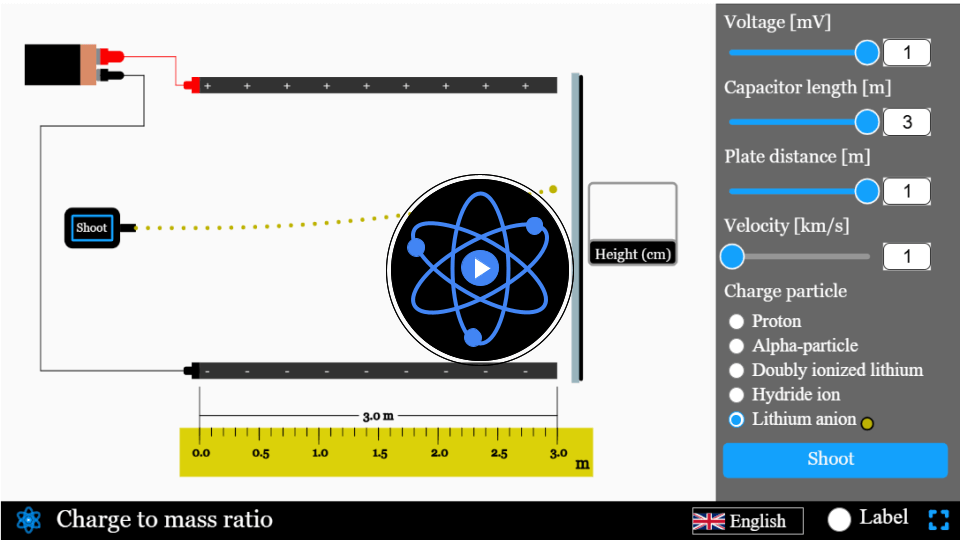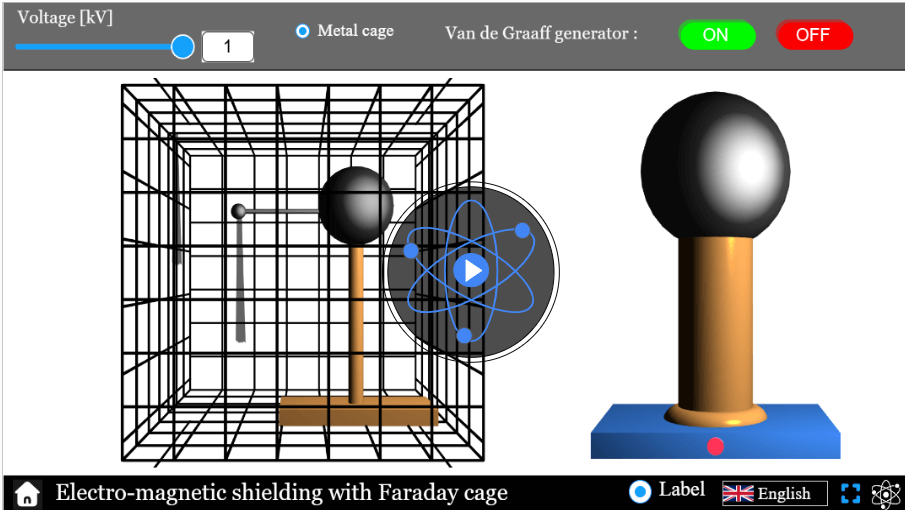Coulomb's Law Simulator
Visualize and experiment with the forces exerted between two charged spheres according to Coulomb’s Law using our interactive simulator.
Coulomb's law
Coulomb’s law is one of the fundamental principles in electromagnetism. It quantifies the electrostatic force developed between two charges. Through our simulator we are presenting you a thought experiment, which will help bring the concept to life, allowing you to visualize the invisible forces at play. Experiment with the controls, change variables, and see how they affect the forces between the charged particles. Clarify your doubts and deepen your understanding. Dive in and start simulating now!
\( F = K \frac{Q_1 Q_2}{d^2} \)
Mathematical description
where:
- \( F\) is the electrostatic force
- \( Q_1 \) (\( Q_2 \)) are the charges
- \( d \) is the distance between the two charges
- \( K \) is the Coulomb’s constant.
Tutorial video
Take a quick spin through our simulator!
FAQs on Coulomb's Law
Qus 1. What is Coulomb's law?
Coulomb’s law describes the force between two charged objects. The force is directly proportional to the product of their charges and inversely proportional to the square of the distance between them.
Qus 2. How is Coulomb's law mathematically expressed?
The Coulomb’s law is expressed as \( F = K \frac{Q_1 Q_2}{d^2} \) where \( F\) is the electrostatic force, \( Q_1 \) and \( Q_2 \) are the charges, \( d \) is the distance between the two charges, and \( K \) is the Coulomb’s constant.
Qus 3. What factors affect the force between two charges?
The force depends on the magnitude of the charges and the distance between them. Greater charges result in a stronger force, while increasing the distance between the charges reduces the force.
Qus 4. What is Coulomb's constant?
Coulomb’s constant, denoted as \( K \), is a proportionality constant used in Coulomb’s law.
Coulomb’s constant is determined by the formula \( K = \frac{1}{4\pi\epsilon_0} \), where \( \epsilon_0 \) is the permittivity of free space. The value of \( \epsilon_0 \) is measured experimentally through the capacitance of parallel-plate capacitors, and its value is \( 8.85 \times 10^{-12} \, \text{C}^2 / \text{N} \cdot \text{m}^2 \), thus leading to \( K \) having a value of approximately \( 8.99 \times 10^9 \, \text{N} \cdot \text{m}^2/\text{C}^2
\).
Qus 5. What do you mean by permittivity of space?
The permittivity of space, also known as the permittivity of free space or vacuum permittivity, is a measure of how much resistance the vacuum (or free space) offers to the formation of an electric field. It represents the ability of a vacuum to permit electric field lines to pass through it. This constant, denoted by \( \epsilon_0 \), has a value of approximately \( 8.85 \times 10^{-12} \, \text{C}^2 / \text{N} \cdot \text{m}^2 \). It’s a fundamental constant in physics and plays a key role in Coulomb’s law and other equations in electromagnetism.





Is it fair to make point source assumption for the charge ball?
Hi Tushar,
Yes — it is fair to assume the charge ball as a point source if its radius is much smaller than the distance between the two charged balls.
In that case, the electric field outside a uniformly charged sphere behaves exactly like that of a point charge located at its center, so Coulomb’s law holds true.
However, if the balls are large or very close, the finite size causes field non-uniformity and deviation from the ideal point-charge behavior, leading to small systematic errors.
So, the point-source assumption is valid only when separation ≫ ball radius.